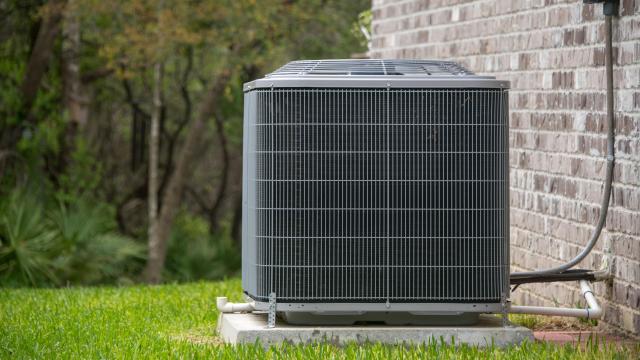If you have some sort of air conditioning in your home, you are among the lucky ones — at least it feels that way until the energy bill arrives. If epic utility bills are making you sweat, there’s one strategy you can try that may seem counterintuitive on the surface but can keep your home cool and your bills manageable during the hottest summer days: supercooling.
What is supercooling?
Supercooling or pre-cooling is a strategy designed to keep your house at a comfortable temperature while reducing your energy consumption — and there’s evidence it actually works if you put the time into planning it properly.
If you, like most people, have your HVAC system set to run mostly during the hottest hours of the day and then go to a lower setting during the cooler hours of the night, you might be engaged in what scientists call Doing It Wrong. That’s because when an HVAC system switches on in a house that is already pretty hot, it has to work extra hard (and use a lot of expensive energy) to pump the heat out. Supercooling or pre-cooling flips the strategy.
The idea is to run your HVAC system at its highest settings at night, when it is coolest outside and the sun isn’t baking your home. Try to get the house down to a really low temperature — about 15 degrees, if you can manage it. As the sun comes up and outside temperatures rise, your house is nice and cold — and will stay that way for a long time, allowing you to put your HVAC system into low mode. During the day, set your thermostat to the highest point you find comfortable — say, 23 degrees. It will take your house a long time to warm up to that point if you take a few steps (covered below), and your HVAC may not run at all.
Supercooling has two huge potential advantages:
- Lower costs. If your utility plan has different rates for peak and off-peak times, you can save a lot of money because you’re running your power-greedy HVAC system during off-peak times when rates can be significantly lower.
- Less wear and tear. If your house is already 32 degrees when you turn on your air conditioner, it’s going to have to work really hard to cool the place down. The compressor, fan, and other components will get a workout. Running it at night when the temperature is much lower means it won’t experience so much wear and tear, so your system may last longer and require less maintenance.
There’s a lot of evidence that supercooling can work both in terms of saving you money and sparing your equipment. But the success or failure of supercooling depends on two factors, one within your control and one not: the construction of your house, and taking a few additional steps to make your house the best thermal battery it can be.
How to keep your home supercooled
Put simply, if your home is an older home or wasn’t built with any sort of energy efficiency in mind, supercooling it will be more of a challenge. That doesn’t mean it won’t work for you, but you’ll have a bit more of an uphill battle if your home isn’t well-insulated and lacks features like a reflective or coated roof.
But even if your house was built using the most energy-efficient materials and designs available, supercooling still relies on a few best practices for success:
- Variable rates. Your electricity billing has to have peak and off-peak hours. If you’re paying the same flat rate for electricity no matter the time of day, supercooling won’t save you any money. This is because the idea is that your AC runs at night when power is cheaper, then runs less (or not at all) during the day when it’s more expensive.
- Programmable thermostats or window units. This isn’t an absolute requirement, but having programmable units allows you to set them and forget them, and guarantee the most efficient operation (and no chance of forgetting and winding up with a hot house or an energy bill that’s even higher).
- Close those windows. Keeping all windows closed so the hot air doesn’t creep in, and keep the shades or blinds down so the sun can’t heat up the interior. This can make your house feel like a cave, but it will be a cool cave.
- Reduce heat sources. The sun and that swampy air outside is one way your house becomes an oven — but the other way is your actual oven. Once you get your house cooled, you’ll need to avoid heating things up from the inside, which means limiting the appliances you use during the day. Don’t bake a chicken for dinner, in other words, because you’ll just be pumping more heat into your home. Other heat-generating appliances to avoid include your clothes dryer and your dishwasher.
- Get used to the chill. Supercooling means your house will get pretty chilly at night, but you’re going to have to avoid doing anything to compromise this, like running space heaters. You might feel ridiculous dressing for winter during the height of a heat wave, but when your electric bill is cut down significantly, you’ll be glad.
Supercooling requires a bit of discipline and planning, but it has the potential to lower your electric bill while keeping your house at a comfortable temperature all day. Your mileage may vary depending on your home’s characteristics (and your tolerance for freezing your butt off at night) but if your utility bills are skyrocketing, it’s worth trying.

Leave a Reply
You must be logged in to post a comment.